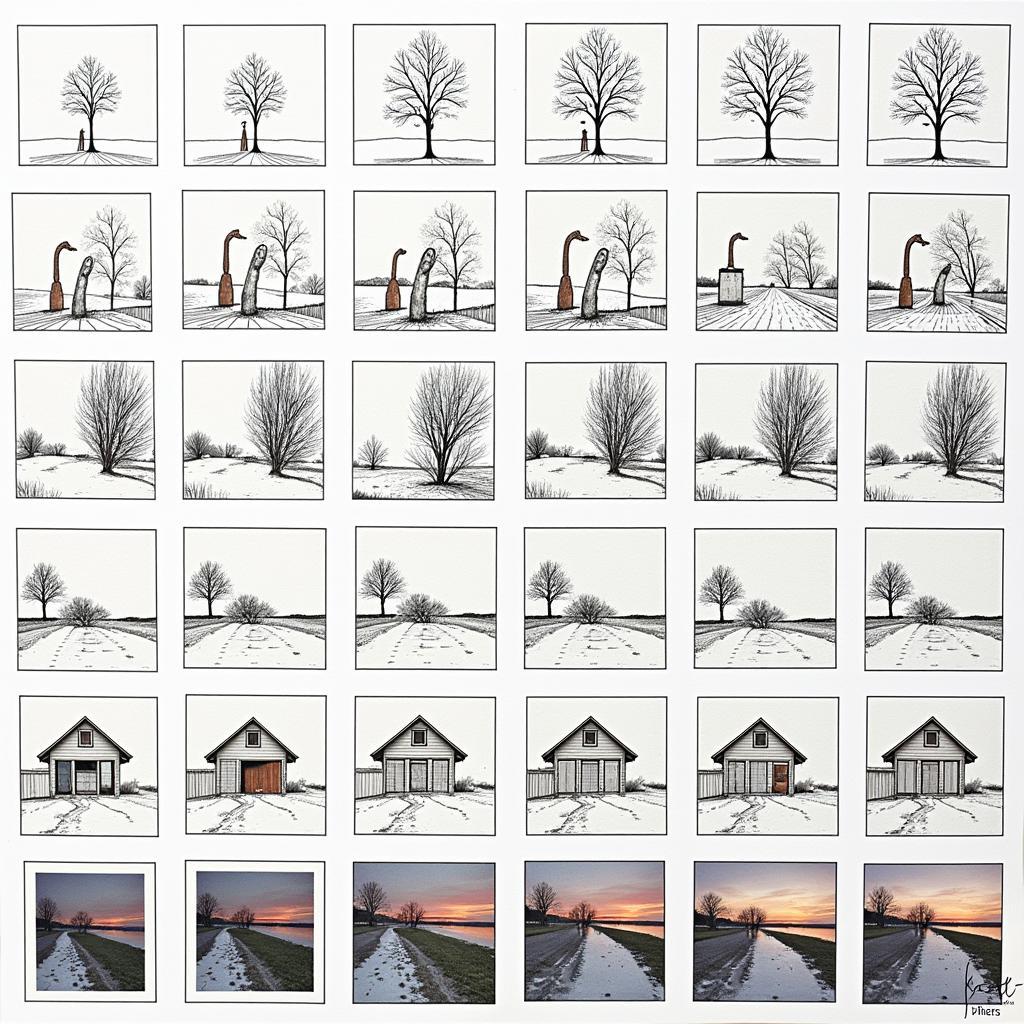Film photography offers a unique charm and a tangible connection to the art of image-making. This guide will walk you through everything you need to know to start your film photography journey, from choosing the right camera to developing your first roll.
Choosing Your First Film Camera
The first step is selecting the right camera. There are various types available, each with its own strengths and weaknesses. Point-and-shoot cameras are simple and easy to use, ideal for beginners. SLRs (Single-Lens Reflex) offer more control and interchangeable lenses, allowing for greater creative freedom. Rangefinders offer a quieter, more discreet shooting experience with precise focusing.
Choosing a camera that fits your budget and shooting style is essential. Don’t be afraid to start with a used camera – many fantastic vintage cameras are available at affordable prices.
Understanding Film Stocks
Film stocks come in various formats, speeds (ISO), and types. The ISO rating indicates the film’s sensitivity to light. Lower ISO films (e.g., ISO 100) are ideal for bright, sunny conditions, while higher ISO films (e.g., ISO 800) are better suited for low-light situations.
Common film types include color negative film, black and white film, and slide film. Each film type yields distinct aesthetic results. Experimenting with different films is part of the fun!
Mastering the Basics of Exposure
Exposure is crucial for well-exposed photographs. The “exposure triangle” consists of aperture, shutter speed, and ISO. Aperture controls the amount of light entering the lens, shutter speed controls how long the sensor is exposed to light, and ISO determines the film’s sensitivity. Balancing these three elements is key to capturing the perfect shot.
What is aperture? Aperture is measured in f-stops (e.g., f/2.8, f/4, f/5.6). A wider aperture (smaller f-number) lets in more light and creates a shallow depth of field. A narrower aperture (larger f-number) lets in less light and creates a greater depth of field.
What is shutter speed? Shutter speed is measured in seconds or fractions of a second (e.g., 1/60s, 1/250s, 1s). A faster shutter speed freezes motion, while a slower shutter speed can blur motion or create light trails.
How does ISO affect exposure? A higher ISO allows you to shoot in low-light conditions without using a flash, but it can also introduce grain.
Focusing and Composition
Accurate focusing ensures sharp images. Most film cameras use manual focus, requiring you to adjust the lens until the subject appears sharp in the viewfinder. Composition refers to how elements are arranged within the frame. Consider the rule of thirds, leading lines, and negative space to create visually appealing photographs.  Focusing and composition techniques in film photography
Focusing and composition techniques in film photography
“Composition is key in film photography. A well-composed image can tell a story and evoke emotion,” says renowned film photographer, John Miller.
Developing Your Film
Once you’ve shot a roll of film, it needs to be developed. You can develop film at home or send it to a professional lab. Developing at home offers more control over the process, but it requires specialized equipment and chemicals. Professional labs offer convenience and consistent results.
Tips for Success
- Practice regularly: The more you shoot, the better you’ll become.
- Experiment with different films and settings: Don’t be afraid to try new things.
- Study the work of other film photographers: Find inspiration and learn new techniques.
- Join a film photography community: Share your work and get feedback from others.
Conclusion
Film photography provides a rewarding and engaging experience. By understanding the fundamentals and practicing regularly, you can unlock the magic of film and create stunning images that capture the essence of your subjects. Embrace the process and enjoy the journey! Remember film photography is a rewarding hobby that allows you to slow down, appreciate the moment, and create tangible memories.
FAQs
- What is the best film camera for beginners? A simple point-and-shoot camera or a used SLR are good choices for beginners.
- Where can I buy film? Film is readily available online and at many camera stores.
- How do I store my film? Store film in a cool, dry place away from direct sunlight.
- What is the difference between color negative film and slide film? Color negative film produces negatives that are then printed into positive images. Slide film produces positive transparencies that can be viewed directly or projected.
- Can I develop my own film? Yes, you can develop your own film at home using a developing tank and chemicals.
- How long does it take to develop film? Developing times vary depending on the film type and developer used.
- How do I scan my negatives? You can scan your negatives using a dedicated film scanner or a flatbed scanner with a transparency adapter.
Need help? Contact us at Phone: 0372960696, Email: TRAVELCAR[email protected] or visit us at 260 Cau Giay, Hanoi. We have a 24/7 customer service team.